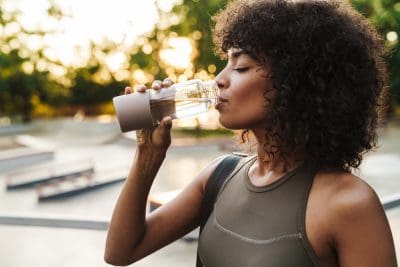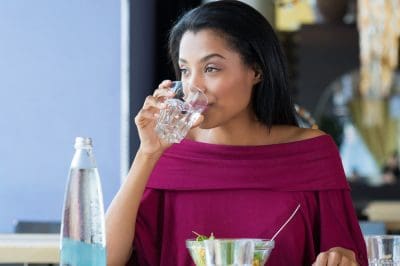Despite water’s essential role in virtually every bodily function, approximately 75% of Americans remain chronically dehydrated, according to research from the National Academies of Sciences, Engineering, and Medicine. This persistent fluid deficit affects everything from cognitive performance to digestive function, yet addressing it requires overcoming both physiological and psychological barriers.
While health authorities have long emphasized the importance of adequate hydration, the simple advice to “drink more water” often fails to create lasting behavioral change. More effective approaches acknowledge the complex reasons behind hydration habits and target these underlying factors rather than relying on willpower alone.
The hydration challenge
The human body provides sophisticated signals for hunger but comparatively subtle ones for thirst. By the time many people recognize feeling thirsty, they may already experience mild dehydration with measurable effects on brain function, energy levels, and mood.
Compounding this biological challenge, modern lifestyles contribute to dehydration through environmental factors like climate-controlled indoor environments, caffeine consumption, and the widespread availability of beverages that hydrate less effectively than water.
The resulting chronic mild dehydration creates a surprisingly wide range of health impacts. Even 1-2% body water loss impairs cognitive performance, particularly for tasks requiring attention, memory, and psychomotor skills. More severe dehydration affects kidney function, electrolyte balance, and cardiovascular health.
Recent research in behavioral psychology and nutrition science has identified several approaches that effectively increase water consumption without requiring constant conscious effort:
Create visual triggers
The brain processes visual cues more readily than internal bodily signals, making environmental reminders particularly effective for hydration. Studies in workplace settings demonstrate that simply keeping water visible increases consumption by 25-30% compared to when beverages must be retrieved from less visible locations.
The most effective visual triggers pair water with existing habits. Placing a water bottle next to car keys, computer workstations, or beside the bed creates natural reminders at transition points throughout the day.
Technology can enhance this approach through smart water bottles that glow periodically as reminders or apps that send visual notifications at strategic intervals. Research indicates these digital nudges increase average daily water consumption by 20% within two weeks of implementation.
Harness habit stacking
Behavioral science shows that attaching new habits to established ones dramatically increases success rates. This “habit stacking” technique proves particularly effective for hydration by connecting water consumption to existing daily routines.
Effective water-related habit stacks include drinking a full glass immediately after morning tooth brushing, before each meal, after every bathroom break, or when transitioning between work tasks. Each established behavior serves as a trigger for hydration without requiring new reminders or decisions.
In clinical studies, participants who implemented three or more habit stacks increased their daily water intake by an average of 28 ounces compared to those using willpower-based approaches, with improvements maintaining after six months.
Optimize water temperature
Temperature significantly affects both the appeal and physiological impact of water. Research indicates that cold water (approximately 40°F) empties from the stomach 20% faster than room temperature water, entering the bloodstream more quickly and providing more immediate hydration benefits.
However, individual temperature preferences dramatically influence consumption volume. While some people drink more cold water, others prefer room temperature or warm water based on personal comfort and cultural factors.
Experiments tracking consumption patterns show that when people have access to water at their preferred temperature, they drink 30-40% more throughout the day compared to when only non-preferred temperatures are available.
Enhance flavor naturally
The perceived blandness of plain water creates a significant barrier for many people accustomed to more flavorful beverages. However, creating appealing alternatives doesn’t require added sugars or artificial ingredients.
Infusing water with fruits, vegetables, and herbs provides flavor with minimal calories while potentially adding small amounts of beneficial vitamins and antioxidants. Popular combinations include cucumber with mint, citrus with rosemary, and berries with basil.
Research examining hydration interventions found that participants with access to naturally flavored waters consumed 25% more fluid overall and were 64% more likely to meet hydration targets than those offered plain water only.
Use container psychology
The vessel we drink from significantly influences consumption volume through both practical and psychological mechanisms. Container size, shape, material, and even color affect hydration behaviors in measurable ways.
Larger containers generally increase consumption by reducing the need for refills, but this effect has important limits. Studies show optimal results with bottles between 20-30 ounces—large enough to reduce refill friction but not so large they become inconvenient to carry.
Transparent containers provide visual feedback on consumption progress, creating natural accountability. Research demonstrates that people using clear containers consume 15-20% more water than those using opaque vessels of identical size.
Bottles with time markers or measurement increments transform hydration into a achievable challenge rather than a vague goal. This gamification element increases engagement, particularly for individuals motivated by achievement and progress tracking.
Leverage social influence
Human behavior is powerfully shaped by social norms and comparisons. Hydration behaviors prove no exception, with research demonstrating that people unconsciously adjust their water consumption to match those around them.
In workplace environments, employees whose colleagues kept water bottles at their desks were 60% more likely to do the same, creating a positive reinforcement loop. Family settings show even stronger effects, with parental modeling of water consumption being the strongest predictor of children’s hydration habits.
Digital social influence also demonstrates effectiveness. Apps that include community elements, where users can share hydration achievements or participate in group challenges, show 35% higher engagement rates and 23% better hydration outcomes than those focused solely on individual tracking.
Incorporate water-rich foods
While beverages provide most hydration, water-rich foods contribute significantly to overall fluid balance. Fruits and vegetables contain 80-95% water by weight along with essential nutrients, making them particularly efficient hydration sources.
Cucumbers, zucchini, watermelon, strawberries, and leafy greens rank among the most hydrating foods, with water content exceeding 90%. Incorporating these foods into daily meals provides “passive hydration” that complements direct water consumption.
Nutrition tracking studies indicate that individuals who consciously increase water-rich foods in their diet typically achieve 15-20% higher total body hydration levels than those focusing exclusively on beverage intake, even when consuming similar volumes of drinking water.
Beyond daily targets
While daily water targets provide useful guidelines, hydration researchers emphasize that optimal fluid intake varies significantly based on individual factors including body size, activity level, climate, health conditions, and diet.
Rather than focusing exclusively on volume-based goals like “eight glasses daily,” health experts recommend paying attention to hydration status indicators including urine color (pale yellow indicates good hydration), skin elasticity, and energy levels.
This personalized approach acknowledges that proper hydration exists on a spectrum rather than meeting an arbitrary threshold. The most effective hydration strategies address individual barriers to water consumption while creating sustainable habits that integrate seamlessly into daily life.
For those who find plain water unappealing after years of flavored beverages, gradual transition often proves more successful than abrupt changes. The percentage of water in the daily beverage mix can increase progressively as taste preferences adjust, eventually making water the default choice rather than an obligation.
By applying these tricks consistently, most people can transform their hydration habits within 30-60 days, establishing patterns that maintain proper fluid balance without constant attention or effort, and experiencing the wide-ranging health benefits that optimal hydration provides.














